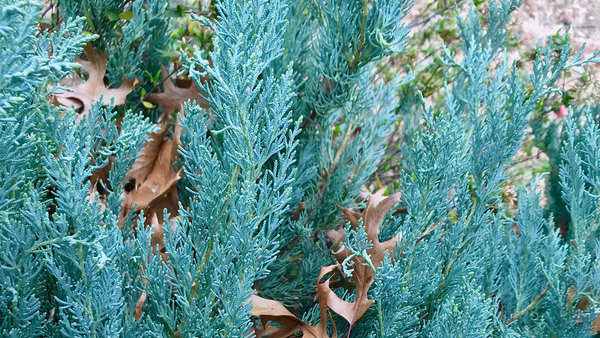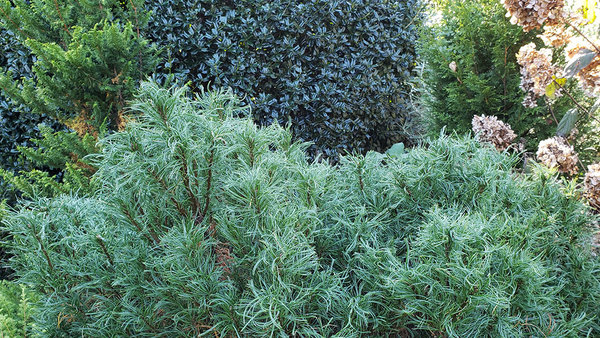
I am fascinated with deodar cedar (Cedrus deodara, Zones 6b–8). It is perhaps one of the most graceful of all evergreens we can grow. Deodar cedar is hardy to 6b and is one of the four known true cedars.
Deodar cedar’s native range
This tree can be found growing in the cool, moist slopes of the Western Himalayas, Afghanistan, and northern Pakistan. This region is one of the world’s most important biodiversity hotspots and includes more than 140 different conifer species. It also includes some of the highest elevations anywhere in the world. Deodar cedar is used extensively among locals for thatching and shelter constructions. It is also used in various forms for medicinal purposes.

Large and impressive examples of deodar cedar can be seen in the Pacific Northwest, with some reaching over 100 feet tall and 60 feet wide. However, the stressful heat and humidity of the Southeast tends to keep these trees slightly smaller. In our region, you can expect to see them approaching 60 feet high and wide.
Not all gardeners have room for a tree of this size. If you love the look of deodar cedar but can’t handle the size, you have a few options. The following are two smaller deodar cedars that can grow in the Southeast.

‘Feelin’ Blue’ deodar cedar
Cedrus deodara ‘Feelin’ Blue’, Zones 6b–8
This cultivar originated as a chance seedling at H. C. Trimp & Sons Nursery in the Netherlands. Truly blue and densely packed needles make this plant stand out. First selected in the mid-1980s, it has taken 40 years for this tree to become commonly sold. Growing around 2 feet high and 6 feet wide over 10 years, this is one of the most compact deodars you can grow.

‘Glacier Blue’ deodar cedar
Cedrus deodara ‘Glacier Blue’, Zones 6b–8
A striking dwarf selection, ‘Glacier Blue’ is slow-growing and compact. Needles are blue and hold their color well throughout the year. After 10 years, gardeners can expect ‘Glacier Blue’ to grow approximately 5 feet high and 6 feet wide. It would make a wonderful background plant to create structure in a garden border. Selected by Bucholz & Bucholz Nursery in Oregon in the early 2000s, this plant is finding more popularity with gardeners today. Both ‘Glacier Blue’ and ‘Feelin’ Blue’ spread as they grow.
How to grow deodar cedar
In the Southeast, we are not able to provide the most ideal growing conditions for deodar cedar. However, we can still keep them healthy and happy. The key to success in growing deodar in the Southeast is good drainage. This plant does not like saturated soils. It’s crucial to plant trees slightly above grade and to make sure the root flare (the broadening of the trunk just above the soil line) is exposed. Deodar cedar prefers full sun and acidic soil. Be sure not to let trees suffer from drought stress in the hottest part of the summer, and water them well when it’s hot. After two or three years of establishment, these trees become less finicky and less susceptible to drought.
‘Feelin’ Blue’ and ‘Glacier Blue’ deodar cedar, as well as other low-growing dwarf conifers, will infrequently grow a more upright branch that should be pruned away. Left unchecked, these branches will increase the overall height of the plant and negatively impact its form.
Blue foliage creates contrast
The color blue is rare in flowers but ever present in our gardening world. Conifers with blue foliage are a powerful gardening element. Paired with reds and yellows, blue sets the stage for a visually striking triadic color scheme. These are two of the best blue dwarf conifers I know of to add to your garden in the Southeast. It’s not just their blue color that makes them great; their texture adds even more to the garden. Both are selections worthy of your consideration.
For more information on conifers like dwarf deodar cedar, check out:
And for more Southeast regional reports, click here.
—Andy Pulte is a faculty member in the plant sciences department at the University of Tennessee.


















Comments
The key is enjoying dwarf cedars is to move before 10 years is up. After that, all bets as to growth rates are off!
Log in or create an account to post a comment.
Sign up Log in